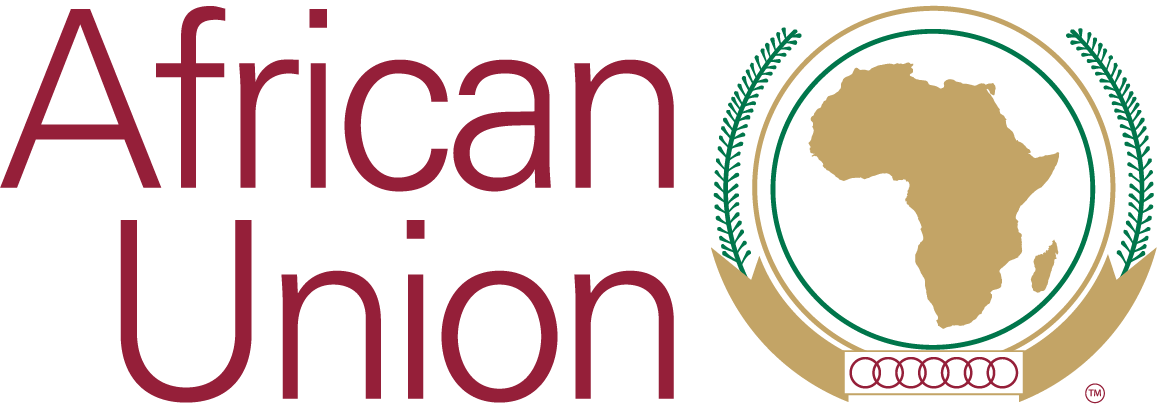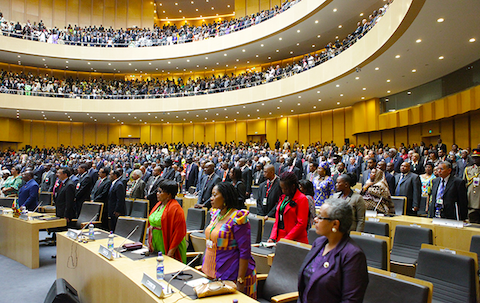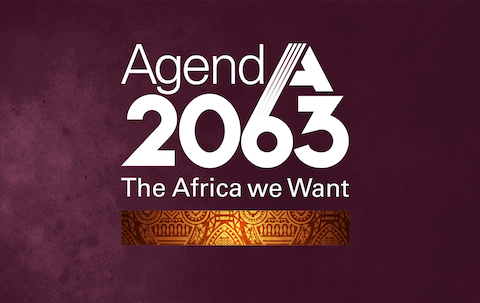Arrival Statement African Union Election Observation Mission to the Republic of Zambia’s 11 August 2016 General Elections
Arrival Statement African Union Election Observation Mission to the Republic of Zambia’s 11 August 2016 General Elections
AFRICAN UNION ELECTION OBSERVATION MISSION TO THE 2016 GENERAL ELECTIONS IN
THE REPUBLIC OF ZAMBIA
PRELIMINARY STATEMENT
Lusaka, 13 August 2016
I. INTRODUCTION
At the invitation of the Government of the Republic of Zambia, the Chairperson of the African Union Commission, Her Excellency Dr. Nkosazana Dlamini-Zuma, deployed an African Union Election Observation Mission (AUEOM) to the Presidential, Parliamentary, Mayoral and Local Council elections in the Republic of Zambia held on 11 August 2016. Concurrently with these elections, the country also conducted a Constitutional Referendum on the Bill of Rights.
The Mission is headed by His Excellency Goodluck Jonathan, Former President of the Federal Republic of Nigeria. The Mission comprised 45 Short term (STOs) and 10 Long Term Observers (LTOs) drawn from several African countries representing the African Union Permanent Representatives' Committee, the Pan-African Parliament (PAP), Election Management Bodies (EMBs), Civil Society Organisations (CSOs) and Independent Elections Experts from 23 African countries . The Mission was supported by technical staff from the African Union, PAP and the Electoral Institute for Sustainable Democracy in Africa (EISA).
The AUEOM assessed the 2016 general elections in Zambia in conformity with, inter-alia, the 2007 African Charter on Democracy, Elections and Governance; the 2002 AU/OAU Declaration on Principles Governing Democratic Elections in Africa; the 2002 AU Guidelines for Elections Observation and Monitoring Missions; the 2003 African Peer Review Mechanism and the legal framework governing the conduct of elections in Zambia.
This statement presents the Mission’s preliminary findings up to and including the closing and counting processes on 11 August 2016. The Long Term Observers will, however, continue to observe the post-electoral developments. A final report will be released upon the conclusion of the electoral process and will be shared with the relevant Zambian authorities.
II. OBJECTIVE AND METHODOLOGY
In fulfilling its mandate, the objective of the AUEOM is to make an independent, impartial and objective assessment of the general elections in the Republic of Zambia.
Prior to Election Day, observers and the mission leadership were briefed by key electoral stakeholders on pre-election issues. To this end, the AUEOM released a pre-election statement on 7 August 2016 urging all stakeholders to ensure that the prevailing peaceful environment that had characterised much of the campaign period is maintained.
The mission’s clarion call for transparent, credible and peaceful polls was reinforced by the public statement issued by Her Excellency Dr. Nkosazana Dlamini-Zuma on August 10, 2016.
On Election Day, twenty-four teams of observers were deployed in nine (9) of Zambia’s ten (10) provinces, where they visited 389 polling stations, in 9 provinces, 87 constituencies, of which 43.3% were in urban areas and 56.7% in rural areas.
III. PRE-ELECTION FINDINGS
The AUEOM noted that the 2016 Zambian elections were the first held in terms of the amended Constitution and will take place concurrently with a constitutional referendum. The lead up to election was marked by vibrant political campaigns despite some isolated incidents of violence and political intolerance reported.
(a) Legal and Institutional framework
The Mission noted that many of the laws governing the 2016 Zambian elections were promulgated between 6 January 2016 and the dissolution of Parliament on the 11 of May 2016. The mission is of the opinion that this may have negatively impacted on civic education and citizen awareness regarding the general elections and the referendum taking place under a new legal dispensation.
The electoral framework required as the basis for the conduct of the 2016 elections were in place and the general political-electoral environment was largely calm and peaceful.
The legal framework governing the 2016 general elections comprised the newly promulgated laws. These include:
1. Constitution of Zambia (Amendment) Act No.2 of 2016;
2. Electoral Commission Act (ECA) No. 25 of 2016;
3. Electoral Process Act (EPA) No. 35 of 2016; and
4. The Constitutional Court Act No. 8 of 2016;
Other key legislation governing the 2016 General Election includes:
1. The Societies Act Cap 119;
2. Local Government Act Cap 281;
3. Referendum (Amendment) Act 2015; and
4. Public Order Act, Cap 113.
Stakeholders consulted raised concerns about some of the recent changes to the legal framework. Specifically, the newly increased election fees and the requirement that candidates must have a minimum education qualification of a grade 12 certificate is viewed negatively by several stakeholders who consider it a discriminatory provision in the absence of free education in Zambia.
In addition to the national legal framework, the Republic of Zambia has adopted, or ratified a number of other relevant regional, continental and international standards that govern democratic elections, notably:
1. The SADC Principles and Guidelines Governing Democratic Elections
2. The African Charter on Democracy, Elections and Governance;
3. The African Charter on Human and Peoples‟ Rights;
4. The African Peer Review Mechanism;
5. The Convention on the Elimination of all Forms of Discrimination against Women;
6. The International Convention on the Elimination of Racial Discrimination;
7. The International Covenant on Civil and Political Rights; and
8. The United Nations (UN) Declaration of Human Rights, among others.
The AUEOM noted with satisfaction that recommendations emanating from Zambia’s 20 January 2015 Presidential election with regard to the timeframe of inauguration of the newly elected President have been adopted. This is in line with AU and international principles to allow some time to consider petitions contesting the outcome of election results.
(b) The Electoral System
AUEOM notes with satisfaction that the promulgation of the amended constitution has facilitated the transformation of the simple majority system to the majoritarian system for the elections of the president. Presently the election of the President requires more than 50% of valid votes cast for the winning candidate, failing which a run-off is required within 37 days. The AUEOM noted that Article 110 of the amended Constitution introduces the running mate system where a vote for the President is equal to a vote cast for the Vice President.
However the simple plurality system in the form of first past the post still obtains in respect of Parliamentary and Local Government level. The AUEOM notes that the First-Past-The-Post (FPTP) system is often not amenable to broad based representation and inclusion of marginalised social groups such as women, youth, minorities and persons living with disability.
(c) Voter Registration
The Mission noted an increase of 29% (1,532,288 voters) on the 2016 voters roll compared to the roll used in the January 2015 elections. The total number of registered voters on the 2016 voters roll was 6,698,372. The number of men registered to vote was 3,325,437 (49.7%) and the number of women was 3,372,935 (50.3%).
The AUEOM noted that stakeholder confidence in the ability of the ECZ to manage and administer electoral processes was generally high.
(d) Electoral Campaign
The AUEOM noted that the general political-electoral environment was largely calm and peaceful despite the isolated incidents of violence and political intolerance reported in Lusaka and Southern Province.
The AUEOM learnt that the majority of cases of violence were perpetrated by ‘party cadres’ of some of the parties contesting elections resulting in tense political atmosphere in the run up to the elections.
Further, the AUEOM noted an absence of distinction in the use of state resources for campaigning and development projects during the campaign period. This was made more difficult by the lack of clarity on whether cabinet ministers should still hold office after the dissolution of Parliament. The Constitutional Court provided an interpretation on the matter although the decision was delivered at the tail end of the campaign.
(e) Participation of Women
Article 9 of the 2003 Protocol to the African Charter on Human and Peoples’ Rights on the Rights of Women in Africa (Maputo Protocol) calls for equal representation in political decision making. The SADC Declaration on Gender and Development puts this threshold at 50% by 2015. Previously, women made up 13.9% of the 150 seats in the Assembly prior to the dissolution of Parliament for the 2016 elections.
Women constitute more than 50% of the Zambian population. This pattern also marked the gender proportion of the registered voters for the 2016 elections. Despite being a demographic majority women tend to be a political minority. This situation is clearly demonstrated by the participation of women in elections. At Presidential level, only one of the nine Presidential candidates was a woman while three of the nine running mates were women. At parliamentary level out of the 651 candidates contesting National Assembly seats, only 106 were female. Of these 106 candidates, 11 are running as independents. Out of 331 candidates for Mayoral and Council Chairpersons, 40 were women.
(f) Civic and Voter Education
The ECZ conducted civic & voter education from 30 May to 29 July 2016, working with various stakeholders including United Nations Development Programme (UNDP), Civil Society Organisations (CSOs), Faith Based Organisations (FBOs) and the Law Association of Zambia to develop and disseminate information and materials for the general election and referendum. To make the materials more accessible to stakeholders, IEC materials were translated into several local languages. Short messages, social media platforms, websites, television and radio have also been utilised to disseminate information.
There appeared to be limited understanding among the citizenry of Zambia on the importance, content and implications of the referendum. This is despite the intensified efforts of the ECZ to popularise the referendum amongst potential voters close to Election Day.
Some of the stakeholders consulted by the AUEOM raised concerns about the scope of the issues that were addressed by the voter education initiative. The addition of the referendum process appears to have increased the complexity of the messaging that needed to be understood by the voters.
(g) The Role of the Media
The AUEOM noted the suspension of The Post newspaper for its failure and default in paying taxes, in the wake of a successful application by the Zambian Revenue Authority to the Supreme Court. Some stakeholders raised concerns that this suspension was politically motivated, and a response to partisan political content disseminated by the newspaper. Some stakeholders that were consulted believe that the government action amounts to stifling the freedom of expression.
The AU Charter on Democracy Elections and Governance and SADC Principles and Guidelines Governing Democratic Elections recognise the vital role played by the media in a democratic state.
The security of journalists was identified as an area of concern by interlocutors from both public and private owned newspapers, forcing some media houses to send junior and less known reporters to cover political rallies secretly for fear of being victimised.
All stakeholders engaged agreed that the media environment in Zambia remains highly polarised and partisan. Consultations with AUEOM interlocutors point to the partisan nature of the public media in favour of the ruling party. Private media is also strongly associated with partisan reporting in favour of opposition parties.
(h) Preparedness of Electoral Commission of Zambia
Article 229 of the Constitution (Amendment 2 of 2016) establishes the Electoral Commission of Zambia (ECZ) and provides for ECZ offices in provinces and progressively in districts. ECZ is yet to establish permanent and decentralised offices in the provinces and districts. Currently, ECZ does not have its own infrastructure in provinces and districts outside Lusaka but makes use of local government structures.
The 2016 elections were planned to take place in 10 provinces, 103 districts, and 1,624 wards. The ECZ established 7,700 polling stations to serve 156 constituencies across the country. There were 10,818 streams at these polling stations.
IV. ELECTION DAY FINDINGS
(a) Opening of the Poll
The AUEOM observed the opening of the poll at 24 polling stations in 9 provinces and 23 districts. Nineteen (19) of the polling stations were in urban areas while 5 were in rural areas.
All 24 of the teams reported a peaceful environment inside and outside the polling centres, and no incidents of campaign materials or visible campaigning near the perimeter of the centres were reported.
Election materials were present at all 24 stations in time for the opening at 0600hrs. Observers reported long queues at all polling stations prior to the opening. Twenty five percent (25%) of the polling stations did not open at 0600hrs, but all 24 teams reported that voting had begun at no later than 0630hrs at the stations observed. In most of these cases, delays were caused by the preparations for opening taking longer than anticipated by polling staff.
Ballot boxes were sealed correctly in every station where AU observers monitored the opening; in full view of party agents and observers.
(b) Polling Stations
The AUEOM observed voting procedures at 390 out of 7,700 polling stations during Election Day. Long queues were observed at 72.2% of polling stations. The AUEOM noted that 7.3% of the polling stations visited were not easily accessible for the elderly and persons living with disabilities. In most cases, this was due to physical impediments such as difficult terrain and polling stations being above ground level.
In 99.4% of the stations visited, the layout of the polling station promoted the secrecy of the ballot and the smooth flow of voters. Party agents and observer groups were able to clearly witness the voting process in 99.7% of stations visited.
The AUEOM noted congestion of voters in polling stations visited partly as a result of the number of voters per stream, the voter identification process, and the number of ballots. This trend may have slowed the voting process.
(c) Voting Process
The AUEOM observed the voting process at 390 polling stations during the period of 0600hrs and 1800hrs on the 11 August 2016. In general, observers were satisfied with the voting process in most polling stations visited.
In 99.7% of all voting stations, observers witnessed voter credentials being checked against the voters roll, and being asked to present both their voters’ registration and national registration cards to the polling officials.
In 6.7% of the stations visited, observers witnessed voters being turned away, and in most cases, this was either as a result of the voter not having the correct voter credentials or presenting themselves at the wrong polling station/stream. In such cases, observers confirmed that most voters were able to be directed to the correct voting stream. Some voters did express frustration when being turned away from polling stations by polling officials, but in most cases this was as a result of the voter standing in the incorrect stream and being directed to the correct stream.
Voters’ thumbs were marked clearly with indelible ink in 99.4% of stations. In the stations where this was not occurring, this was due to supplies of the indelible ink running out.
Priority assistance was given to persons living with disabilities, the aged and infirm in most polling stations (89.5%). Where assistance with the casting of ballot was required, the observers expressed satisfaction at the way in which this was handled by ECZ officials.
No forms of irregularities were observed in 99.4% of voting stations. In both stations where these irregularities were reported, observers noted the failure to stamp the ballot papers with a self-inking stamp. 7.5% of stations visited had run out of materials during the visit, in most cases either the indelible ink or the ink inside the self-inking stamps. In some stations, delays were caused by voters requiring specific assistance with how to fold and cast their ballots in the correct ballot boxes.
(d) Polling Personnel
Most polling stations were managed by the correct number of ECZ officials (7). 54% of ECZ officials in polling stations visited were women. The observers also noted the high representation of young people among the ECZ polling staff.
In most stations, the AUEOM reported that the staff performed their duties competently, and accordance with the laws and electoral regulations of Zambia.
(e) Party Agents and Independent Observers
All polling stations (100%) visited were monitored by political party agents. Party agents expressed no reservations to the observer teams in 87.3% of the polling stations visited. The main reservations raised by party agents included verifying voters on the voters roll, the presentation of registration cards at polling streams, and the indelible ink marks not being applied correctly on thumbs of voters.
Citizen observer groups were present in 60.4% of the polling stations visited. Citizen observers expressed similar reservations to the party agents, although in 2 stations, citizen observers expressed concern regarding the conduct of the party agents interfering in the voting process.
(f) Security Personnel
Security personnel were present at all 338 voting stations visited, and remained present during the close and counting process. In 229 stations, AU observers described the security presence as ‘discreet’ and only in one (1) station was the security described as ‘insufficient’.
The AUEOM observed peaceful conditions in 99.7% of the polling centres visited during voting, with one (1) incident of chaotic queue control reported. Cognisant of the tensions preceding the polls, and specific incidents of intimidation and violence between party supporters in some areas, the AUEOM was satisfied with the generally calm and orderly nature of the voting process.
(g) Closing and counting process
The AUEOM observed the closing and counting procedures in 22 voting stations, in 9 provinces and 21 districts. 18 of the stations were in urban areas, while 4 were in rural areas.
AUEOM observers noted that 63.6% of the stations visited closed at 1800hrs while 8 stations remained opened to allow those already in the queue to cast their vote. The AUEOM observed voters still in the queue at some of the polling stations and all of these voters were able to cast their ballots before the station closed.
In all 22 stations, the count was conducted at the polling station. 90.9% of the stations where the count was observed carried out the counting process in accordance with the laws and regulations of Zambia. No AU teams reported observing irregularities with the ballot boxes, and in 20 of the stations, the reconciliation was properly conducted. In 2 stations, no reconciliation was observed prior to the count beginning.
It was noted that lighting was an issue during the count in five (5) polling stations (4 rural and 1 urban). The count was conducted in full view of party agents and observer groups. Party agents were present for the count in all 22 stations. Two (2) stations reported witnessing party agents interfere in the counting process.
Counting stopped in two (2) stations, with one (1) station stopping the count for more than 2 hours. The AU team was not able to get an explanation for this delay.
V. RECOMMENDATIONS
Based on the aforementioned findings, the AUEOM makes the following recommendations in order to improve future electoral processes in Zambia:
To the Government:
• Consider appropriate affirmative action measures, including quotas, to enhance women’s participation;
• Avoid holding national referenda at the same time as national election processes in future;
• Promulgate legislation affecting elections at least 12 months prior to the election date in future;
• Ensure that public servants such as police remain non-partisan and do not get involved in party political activities.
To the Electoral Commission of Zambia:
• Undertake measures to reinforce training of polling personnel;
• Review the voter education campaigns conducted ahead of the 2016 elections and learn lessons on how to improve on this messaging in future elections;
• Review the procurement of materials, in particular the self-inking stamps to ensure that this issue does not reoccur;
• Encourage more equitable, fair and unbiased coverage by the media throughout the election period;
• Encourage equitable and fair access to public media by all political parties;
• Ensure that all polling stations are provided with sufficient light to ensure a fair and transparent counting process; and
• Increase the number of streams at polling centres, the number of booths per stream, and reduce the overall number of voters per stream to facilitate smoother voting procedures.
To the media:
• Ensure more equitable, balanced and unbiased reporting of electoral campaigning and political party activities.
To Political Parties:
• Encourage all members of their respective parties to participate in political activities in a peaceful manner, observing all laws and regulations during such activities;
• Refrain from intimidation and violent rhetoric during campaigning;
• Channel any disputes regarding the electoral outcomes through the appropriate legal channels as per the Zambian legal framework; and
• Desist from forming and organising party youths with the intention of stirring up election related violence.
VI. CONCLUSIONS
The AUEOM commends the people of Zambia for the largely peaceful 2016 elections, notwithstanding a few incidents of election-related violence. The Mission believes that the 2016 general elections constitute an important historical moment towards sustainable peace in Zambia in line with the 2003 AU Protocol Establishing the Peace and Security Council. Equally commendable are the efforts made by all parties and candidates, who demonstrated leadership by committing themselves to peaceful elections in line with the Peace Pledge signed by political parties. The AUEOM also appreciates the role played by the security agencies in providing election security.
The AUEOM applauds the people of Zambia for their commitment to upholding democracy as demonstrated by their patience and civil conduct on Election Day. The AUEOM commends ECZ for measures undertaken to enhance the integrity and credibility of the electoral process aimed at safeguarding the legitimacy of the election outcome in conformity with the 2003 African Peer Review Mechanism and the 2007 African Charter on Democracy, Elections and Governance.
The AUEOM presents this preliminary statement taking into consideration the fact that the tallying processes and the announcement of the final results is still ongoing. The AUEOM concludes that the elections have been conducted in a peaceful atmosphere within the framework that satisfactorily meets the continental and regional principles of democratic elections. The AUEOM calls on the people of Zambia to accept the outcome of the results and encourages all parties to resort to legally established channels, should there be a dispute on the outcome of the process. As the ECZ completes the final phases of the electoral process, the AUEOM implores all political parties, candidates and all Zambians to preserve peace and security in the country in furtherance of the country’s acclaimed status as a peaceful nation since independence. The AU long-term observers will continue to observe the post-electoral process.
Department Resources
MANUAL ON MODALITIES FOR ENHANCING COORDINATION BETWEEN THE PEACE AND SECURITY COUNCIL OF THE AFRICAN UNION AND THE AFRICAN MEMBERS OF TH
The African Union Commission (AUC) envisions “an integrated continent that is politically united based on the ideals of Pan Africanism an
Highlights of the cooperation with the GIZ-project “Support to the African Union on Migration and Displacement”
Violent extremism is a global issue.
Agenda 2063 is Africa’s development blueprint to achieve inclusive and sustainable socio-economic development over a 50-year period.










